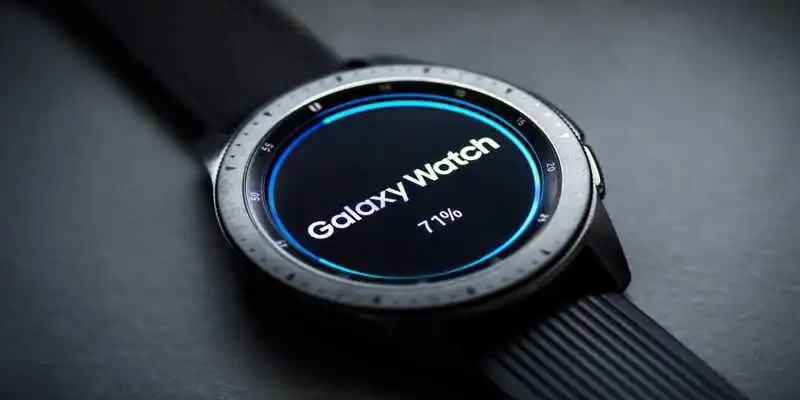Top 5 Smart Glasses for 2025: Must-See Picks
In 2025, smart glasses are no longer futuristic; they have become a gateway to the next era of personal computing. Being smart and immersive, they are changing how we see the world. Let’s explore the best smart glasses, where style meets intelligence and novelty blends seamlessly with everyday life.

Wearable technology is making a massive leap forward in 2025, and smart glasses are leading the charge. Industry giants like Meta, Ray-Ban, XREAL, and Rokid are redefining what wearable tech can do. The latest models designed with the most advanced technologies are finally emerging from experimental labs and making a real impact in 2025. The global smart glasses market, which was valued at $1.3 billion in 2024, is projected to grow at a CAGR of 11.09% and jump to hit $3.01 billion by 2032.
Once seen as futuristic novelties, smart glasses in 2025 are shifting to mainstream tools blending AI, AR, intuitive voice controls, and style- all in one frame. These smart wearables are merging cutting-edge technology with everyday life. They deliver cinema-like visuals, real-time translations, crystal-clear audio, and hands-free AI assistance. Whether for entertainment, productivity, or accessibility, there's a perfect fit for every need.
In our list, the best smart glasses for 2025 include Meta Ray-Ban Gen 2, Oaklay’s Meta HSTN, Rokid Max 2, RayNeo Air 3s and XREAL One Pro. We tested and analyzed these top five smart glasses in a real-world scenario to see which models stand out. In this guide, you will find a detailed comparison based on some specified criteria. Keep reading to choose the perfect pair of smart eyewear for your lifestyle.
Ranking Criteria for Top 5 Smart Glasses of 2025
We evaluated each pair of our selected smart glasses on these six essential criteria:
- Camera & Video Features
- AI and smart features
- Display/AR experience
- Battery & Endurance
- Design, Comfort & Fit
- Pricing and Value
After analyzing their real-world performance in each category, we compared them to decide where each must stand.
Firstly, we have ranked them separately against the first five criteria. Then, we have determined their overall ranking based on the value they deliver against their price: the sixth most important criterion.
Camera & Video Features
1. Oaklay Meta HSTN
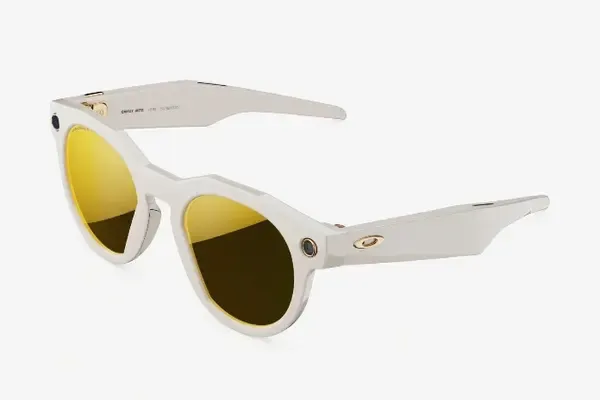
HSTN stands at #1 in this category. The 12MP camera can capture images in 4000x3000 px and video up to 3K resolution (approximately 3072x1728) at 30fps. The photos and videos are sharper and more detailed than those of competitors.
These smart glasses work great in image stabilization at 1080p resolution. Whether running, biking, or moving over uneven terrain, your footage looks steady at 1080p mode. However, electronic image stabilization becomes weaker at 3K resolution. Videos shot in 3K mode appear shakier and less stable. You can record a video of up to 50 minutes at 1080p, while a few minutes less at 3K resolution.
Recommendation: Despite having higher resolution, there is no visible difference between 3K and 1080p recordings. So, stick with 1080p for smooth footage and longer battery usage.
2. Meta’s Ray-Ban Gen 2
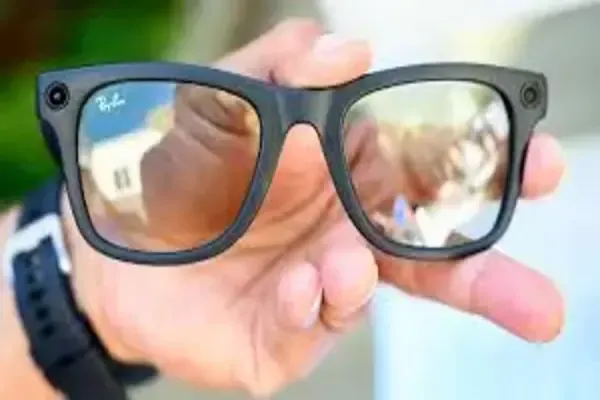
Unlike Gen 1, which has dual 5MP cameras, Gen 2 of Ray-Ban Meta smart glasses has a single 12MP camera in the right temple. Its left module houses a bright, hardwired privacy LED indicator. When you take a photo or record video, the LED on the left frame lights up visibly to let the bystanders know the camera is active. This design reduces unnecessary hardware, keeps the glasses lightweight, and ensures others are alert when they might be recorded. The camera can capture up to 3024 x 4032 px images with f/2.2 aperture. You can record a 60-second video at 1440x1920px (2K) and a 180-second video at 1080p at 30 fps. The image stabilization feature is available but unsuitable in motion, positioning it at #2. Moreover, ultra-wide lenses may cause mild fish-eye distortion while capturing wide scenes
3. XREAL One Pro

With an optional 12 MP XREAL Eye camera module (1.5g) attached to the frame, these smart glasses can produce photos at up to 2016 x 1512px and videos up to 1600 x 1200 px. The user can record a 60-second video at 1080p (60fps). However, the image/video appears fuzzy and soft rather than sharp and detailed like Oaklay Meta HSTN.
4. Rokid Max 2 AR Glasses
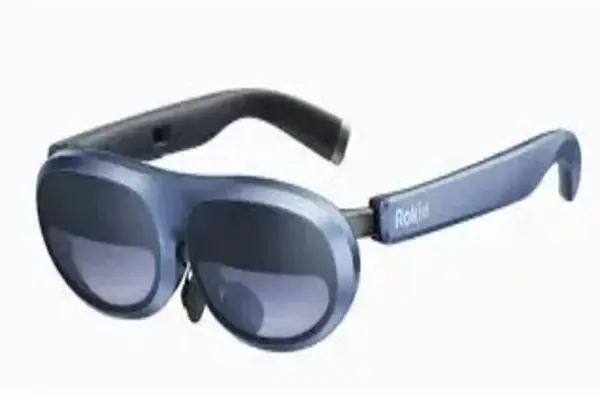
Unlike its competitors, Rokid Max 2 smart glasses don't have a built-in camera. However, it can display video from external feeds like GoPro, smartphones, laptops, etc.
5. RayNeo Air 3s
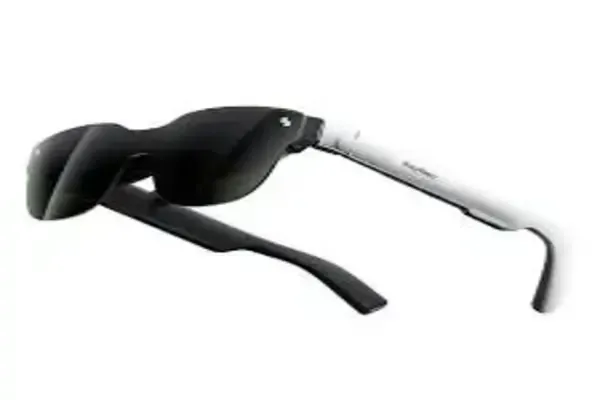
No built-in camera or video feature.
AI & Smart Features
1. Oaklay Meta HSTN
Positioned at #1 in AI and smart features, Oaklay offers a seamless Meta AI experience. Think of HSTN as your wearable adventure computer, designed for real-world motion.
- Visual AI: With a quick "Hey Meta", you get access to an AI-powered digital assistant. The built-in 12MP camera lets the AI "see" what you see and respond in real time. Visual AI features identify landmarks, translate signs, and describe what you see.
- Sports Analytics: Get quick feedback on things like wind speed while golfing or surfing. Even in strong sunlight, you can ask, "Hey Meta, how strong is the wind today?" It will give you contextual feedback tailored to your sport. You can also receive feedback during a workout.
- Multimodal smart assistant: The HSTN smart glasses let you make calls, send voice messages, launch a 3K video recording, or livestream your POV on Instagram or Facebook. No need to grab your phone: ask Meta to start livestreaming, or make a mid-run call. Whether you are riding, hiking, jogging, or just chilling, this digital assistant is always ready to answer your queries and keep you connected, without slowing you down.
- Advanced Translation and QR Scanning: You can scan a QR code, a sign, or menus with these smart glasses. The live translation feature translates what someone is saying in multiple languages in real time.
- Always-on Voice with invisible sensors: The five hidden microphones pick up your voice clearly, while the open-ear speakers describe your surroundings. Together, they create an ambient experience.
2. Meta’s Ray-Ban Gen 2
Look-and-Ask (Visual AI) feature: Say "Hey Meta, what am I looking at?" the Ray-Ban glasses take a photo of your view and forward it to Meta AI to verbally explain the image. It feels more like a casual conversation with your human assistant, as you don't need to repeat "Hey Meta,” while asking follow-up questions.
- Live Translation across languages: Say “Hey Meta, start live translation in English”- or vice versa; and let these smart glasses translate in your preferred language. Remember, the live translation works offline but only if you download the language pack. Otherwise, it may drop mid-conversation. Though it currently supports English, Spanish, French, and Italian, more languages are expected soon.
- Visual Reminders: Suppose you are walking through somewhere wearing your Meta glasses, and you come across a spot, or any other thing or person you want to remember. Say, "Hay Meta, remind me about this later." The Ray-Ban smart glasses will take a snap and store it in the companion app. Later, you can tap the reminder to view that image. This AI eyewear can also scan QR codes and phone numbers and send them to your phone.
- Livestreaming: Go live on Facebook or Instagram right from your glasses. You can see comments pop up in front of you while staying hands-free.
- Voice Messaging: With these Meta AI glasses, you can send voice messages via WhatsApp or Messenger. You don't have to hold your phone and send someone a message. Just say, "Hey Meta, send a voice note to Maria saying breakfast is ready."
- Music & Audio Control: Playing and enjoying music has become effortless with these Meta Ray-Ban smart glasses. They let you control your playlist, skip tracks, and even identify songs with a simple voice command. Thanks to the partnership with Spotify, Amazon Music, Audible, and iHeart! You can now stream your favourite playlist, listen to audiobooks, enjoy live radio, switch the tracks, or adjust the volume with a simple "Hey Meta" command.
3. Rokid Max 2 AR Glasses
- Visual Recognition and Real-time Translation: With a simple "Hey Rokid" command, the Rokid Max 2 AR glasses can recognize what you are looking at. They translate text or speech on-the-fly, solve math problems, and even estimate calories in your meal.
- Voice-print secure payment: This pair enables Alipay payments via voice authentication.
- Virtual Assistant: They help you book a ride or find directions. Messages, ride-hailing, or travel info appear in your field of vision.
4. XREAL One Pro
Built as a high-resolution AR consumer device, the XREAL smart glasses lack embedded AI; however, some external extensions are available to access AI through this AR eyewear.
- XREAL Eye Camera or XREAL Beam Pro (Optional): This 12MP detachable camera is not built-in. You can purchase it separately and attach it between the nose pads. It enables first-person video recording and photo capturing. Enjoy future multimodal AI features like voice commands, live translation, and image recognition. If you want XREAL One Pro smart glasses to deliver full AI capabilities, pair them with XREAL Beam Pro (Android host). Acting as the spatial computing base, Beam Pro hosts cameras, voice, and processing power to turn the glasses into a functional AI system rather than just a display accessory. It can analyze what you are looking at, translate text on the fly, run ChatGPT/Gemini voice apps, and offer verbal or visual feedback in real-time.
5. RayNeo Air 3s
Like XREAL One Pro, Ray Neo Air 3s lacks native Meta-like assistant. Smart features are limited to device pairing and media playback. You can access them via a host device like a smartphone or a streaming stick. However, its audio capabilities are superb. They are excellent as a screen-centric headset, but if you need a smart assistant, their competitors deliver far more.
Display/AR Experience
1. XREAL One Pro
These smart glasses are powered by a Sony 0.55" Micro-OLED display and come with State-of-the-art AR visuals. Imagine sitting in front of a cinema or giant TV- this is what XREAL One Pro smart glasses deliver with the best display and AR features. The display offers flat-prism optics with up to 700 nits brightness and a 120 Hz refresh rate. The 57° field of view creates the illusion of watching a huge 171-inch screen placed about 6 meters away from you. The X1 chipset keeps your virtual display stable in space. Whether gaming, streaming, or working remotely, you find everything natural-looking with a clear and sharp view, even at the edges. The lightweight design embodying such powerful tech makes XREAL One Pro the most immersive AR eyewear right now. Get an immersive sensation of a full-scale theatre screen, without ever leaving your seat.
2. Rokid Max 2 AR Glasses
Using Sony micro-OLED panels, these smart glasses deliver vibrant visuals at 1080px with up to 600 nits brightness and a 120Hz refresh rate. They provide smooth, fluid visuals, even during fast motion or gaming sessions. With a 50 ° field of view, Rokid Max 2 creates the illusion of a 215-inch virtual screen at about 6 meters away. Instead of cinematic displays, Rokid Max 2 delivers monochrome overlay graphics (like arrows for direction, subtitles for translation, or quick reminders) right in your field of view. These graphics complement, not overwhelm, your real-world vision. They are lightweight with adjustable eyepieces. Users have found them reliable with clear vision, no blurry edges or server lag, considering it a great choice for casual productivity.
3. RayNeo Air 3s
RayNeo smart glasses are best for media consumption, though they don’t deliver overlays or smart visuals. Built with eye-comfort features like OptiCare and TUVSUD-certified blue-light filtering, this smart eyewear minimizes screen flicker and reduce harmful blue light. The display features make it perfect for watching long videos or working for long hours without straining. For smart visuals, connect the glasses via a USB-C DisplayPort cable to your phone, laptop or gaming device and get a virtual big screen experience. Powered by HuwView micro-OLEDs at 1080p, with a 120 Hz refresh rate and up to 650 nits brightness, they project a virtual 201-inch screen in front of you.
4. Meta Ray-Ban Gen 2 & Oaklay Meta HSTN
Both of these smart glasses lack any heads-up display overlays as they are built for AI, not AR.
Battery & Endurance
1. Oaklay Meta HSTN
These smart glasses' battery and endurance feature makes them a considerable upgrade over their competitors. Its battery life is up to 48 hours on standby with the charging case, while 19 hours without it. They deliver up to 8 hours of battery life when used for AI features, open-ear audio, and video recording, etc. In practical testing, Oakly Meta HSTN surpassed Ray-Ban glasses by capturing a 50-minute video vs a 30-minute video. Its battery also lasted one hour longer while using it for music and livestreaming. These AI glasses are fast-charging. They get 50% charged in 20 minutes, while fully charged in 50 minutes.
The Snapdragon AR1 Gen 1 processor and optimized power management position Oaklay Meta HSTN glasses as the best in battery and endurance. They are ideal for active, outdoor, extended usage without rapid battery drain.
2. Rokid Max 2 AR Glasses
The Rokid Max 2 AR glasses, paired with the Rokid Station stand at #2 in battery and endurance features. The Rokid Station has a robust 5,000 mAh battery, which powers both itself and the Rokid Max 2 glasses. The battery gets fully charged in about 1.5 hours and can last up to 5 hours when continuously used for AR. Since the glasses lack a built-in battery and the station supplies all power, they consume very little additional energy. Moreover, the overlay-based AR also supports efficient power usage and minimal drains. As a result, these AR glasses deliver extended battery life during AR sessions.
3. XREAL One Pro
The active runtime for XREAL One Pro smart glasses is around 5 hours. It includes AR usage like media playback or productivity tasks. It takes about 1.5 hours to fully charge the internal battery and lasts 24 hours on standby. However, the battery drains faster if you connect optional accessories like an external camera module or XREAL Beam Pro. The battery lasts excellently for immersive AR viewing only. It is not optimized for all-day, continuous usage.
4. RayNeo Air 3s
The battery life of these smart glasses is around 5 hours of continuous media playback or gaming. It lasts for 24 hours when idle. These glasses lack onboard AI or camera, their energy usage is predictable. The battery has to power the display and basic speakers only. RayNeo Air 3s ranks at #4 because it lacks the efficiency leverage of Rokid or battery headroom like Oakley.
5. Meta’s Ray-Ban Gen 2
The Ray-Ban Meta Smart Glasses (Gen 2) offer the shortest active runtime. The battery lasts around 4 hours of active use during general tasks like image capture, audio, or casual interactions with Meta AI. Charging is relatively fast, though. It takes one hour to complete recharge and reach 50% battery in 20 minutes. However, the battery depletes quickly while using AI features or video recording.
Design, Comfort, & Fit
1. Oaklay Meta HSTN
Weighing around 53g, Oakley offers a bold, angular design with a secure, sports-fit frame. Its PRIZMTM Polarized lenses with polarization filters and IPX4 splash resistance make them ideal for outdoor environments. The lenses block 100% UVA, UVB, and UVC rays and are made from impact-resistant Plutonite, offering strong eye protection. Ideal for fashion-conscious consumers and those who want vivid and glare-blocking visual clarity.
2. Meta Ray-Ban Gen 2
Styled like classic Ray-Bans (Wayfarer and Headliner frames), the Meta Gen 2 glasses are lightweight (approx. 49g), which make them comfortable to wear for hours. Its rigid hinges help these glasses stay open rather than folding inward when placed on a table. Though the arms are bulkier than other models, they still feel comfortable. IPX4 splash resistance allows you to wear them outside in the rain.
3. Rokid Max 2
These smart wearables have a light (approx. 75g), minimalist AR frame. Though they are not a traditional eyewear aesthetic, they are comfortable for long-duration wear.
4. XREAL One Pro
They are sleek AR glasses weighing a bit higher than its competitors (about 85g). They look like normal glasses with an optional clip-on sunshade you can add when needed, giving them a clean, stylish appearance. The shades do not interfere with your view of the AR display, so you can stay outdoors comfortably without glare.
5. RayNeo Air 3s
This eyewear features a basic plastic frame weighing approximately 76g. It has shaded front lenses resembling sunglasses, a silver-tone finish, and rigid USB-C arms, making it less polished than Meta or Oakley design. Unlike competitors, fitting takes patience as you need to tweak nose bridges and frame positioning for clarity.
Overall Ranking Based On Pricing and Value
1. Meta’s Ray Ban Smart Glasses (Gen 2)
Available for approximately $299, Ray Ban Meta smart glasses are leading as the most widely adopted AI eyewear. It runs on the Qualcomm Snapdragon AR1 chip. With smart AI features, the Gen 2 Ray Ban Meta glasses take AI beyond just "voice assistants." They let you see, remember, speak, and stream all effortlessly while looking stylish. The blend of technology and style available at a reasonable price makes them the best pair of smart glasses in 2025. Reviewers affirm the glasses are worth the cost for users who want a blend of technology and convenience in everyday AI eyewear.
2. Oakley Meta HSTN
Priced at $399-499, depending on edition, this is Meta's first Oakley-branded model, which was released in mid-2025. Powered by AR1 Gen 1 chip, five built-in mics for clear voice pickup, and a UI designed to support you while running, riding, or creating live content, make it an ideal choice for athletes or anyone who wants AI that keeps pace without slowing them down. Though its expensive than most of its competitors, full Meta AI integration- from camera-based visual recognition to environmental insights, along with rugged design and athlete-grade sensors offers value beyond the price tag. They are unmatched in responsiveness and utility. It’s just like having a personal coach, translator, and hands-free content creator rolled into one.
3. RayNeo Air 3s
At about $259, RayNeo Air 3s gives you an impressive 1080p micro-OLED display, great audio, and plug-and-play convenience with minimal strain on your eyes, making them ideal for travel or desktop use. While it lacks a camera or advanced AI, the price makes it unbeatable for entertainment and productivity users who want a cinematic personal display without spending big. Many reviewers call it the best valued AR glasses of 2025; however, in our list of smart glasses, they rank at #3 because of their fitness issues and lack of essential features.
4. Rokid Max 2 AR Glasses
Available at approximately $529, Rokid Max 2 strikes a solid balance between price and functionality. Powered by Alibaba's Tongyi Qianwen AI and Snapdragon AR1 processor, these AR glasses offer a strong Chinese-market AI experience with real visual and translation intelligence. They are ideal for accessing lightweight overlays like translation, navigation, or Android TV content projected through the glasses. It can be an excellent companion for productivity, remote work tasks, streaming, or an immersive movie experience.
Overall, the blend of visual impact and comfort justifies the price. The plug-and-play use, especially when paired with the Rokid Station for uninterrupted media playback, makes Rokid AR glasses more valuable. We have placed them at #4 as sometimes we feel visual artifacts like oversharpened, jagged edges, etc. It also lacks large-scale adoption of Meta AI and other integrations found in Oaklay and Ray-Ban.
5. XREAL One Pro (with XREAL Eye Accessory)
XREAL One Pro offers the most immersive AR display but comes at the steepest price of approximately $649. Powerful when combined with a smartphone or external AI, but lacks embedded AI or offline translation capabilities. Camera quality is low, and the video recorded while moving or in dim lighting lacks fine textures and crisp details. It is okay for basic capture but not premium imagery. Voice commands work great for the U.S and Canada users: however, visual or translation features roll out to be slower in other regions. It's unmatched for AR enthusiasts, but lack of built-in AI and camera makes it hard to justify the steep price for everyday users who want an all-in-one smart glasses.
Best Use Cases for Top 5 Smart Glasses of 2025
Meta’s Ray Ban Smart Glasses (Gen 2) – Best Style + AI Affordability Combo.
Ideal for everyday users, social media integrators, and content creators who want stylish, AI-powered glasses with built-in camera and voice assistant features.
-
Oakley Meta HSTN – Premium AI + Video for active users.
Best for athletes, content creators, and travelers on the go who need rugged design, long battery life, and powerful AI features for an active lifestyle. -
Rokid Max 2 AR Glasses – Mid-range AR with useful features
Perfect for productivity-focused users who need AR overlays, real-time translation, and efficient multitasking tools. -
RayNeo Air 3s – Best budget AR glasses
Best for media users, entertainment lovers, and frequent travelers who want an affordable option with a massive virtual screen. -
XREAL One Pro (with XREAL Eye Accessory) – High-end AR visuals but very expensive
Best for Immersive Visual AR Experiences. They are designed for AR enthusiasts, gamers, and professionals who demand the most immersive display experience for work and entertainment.


